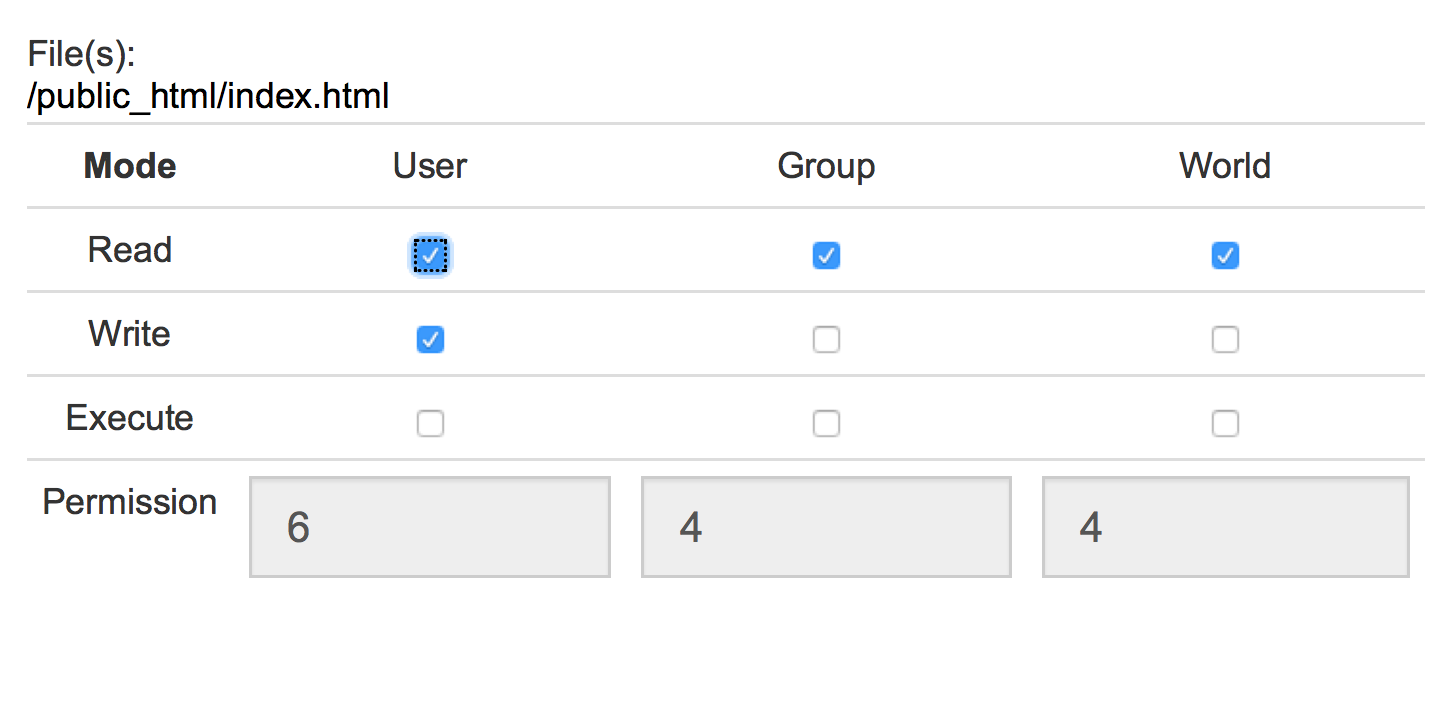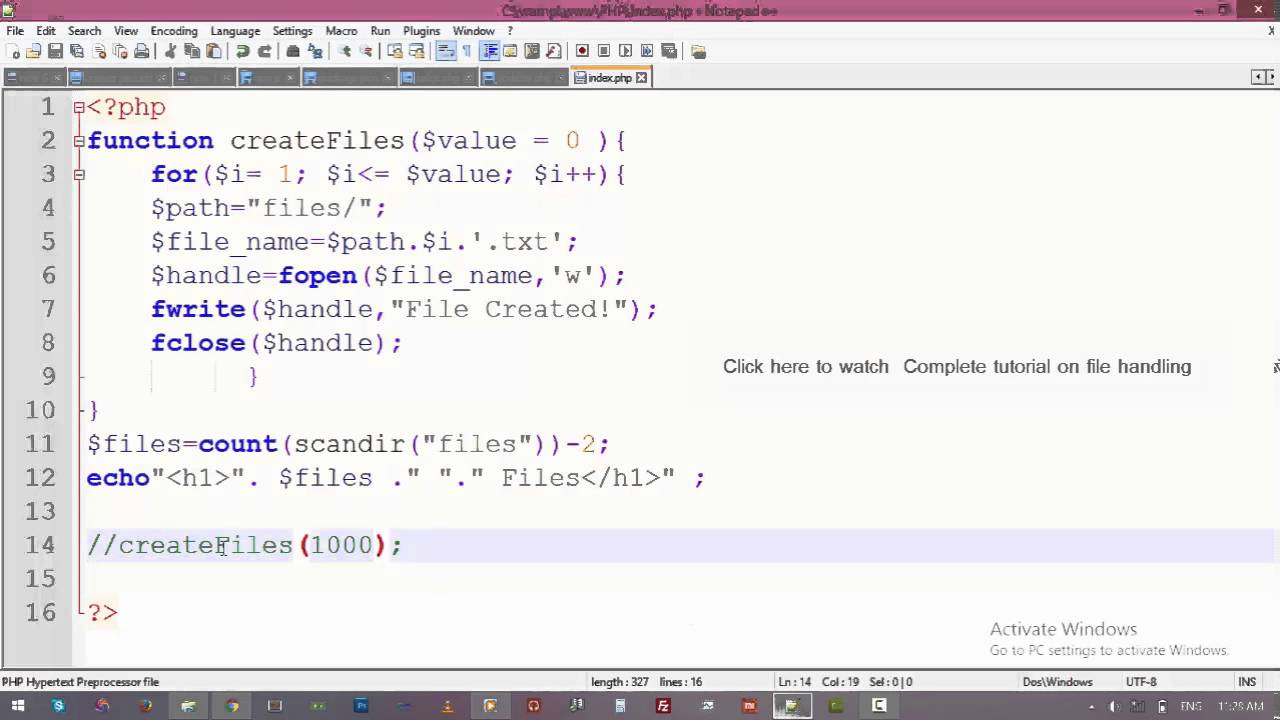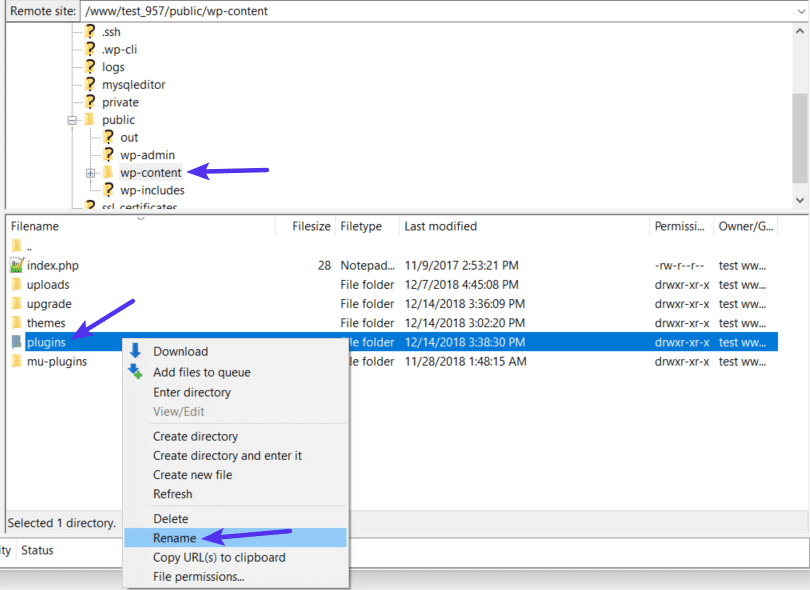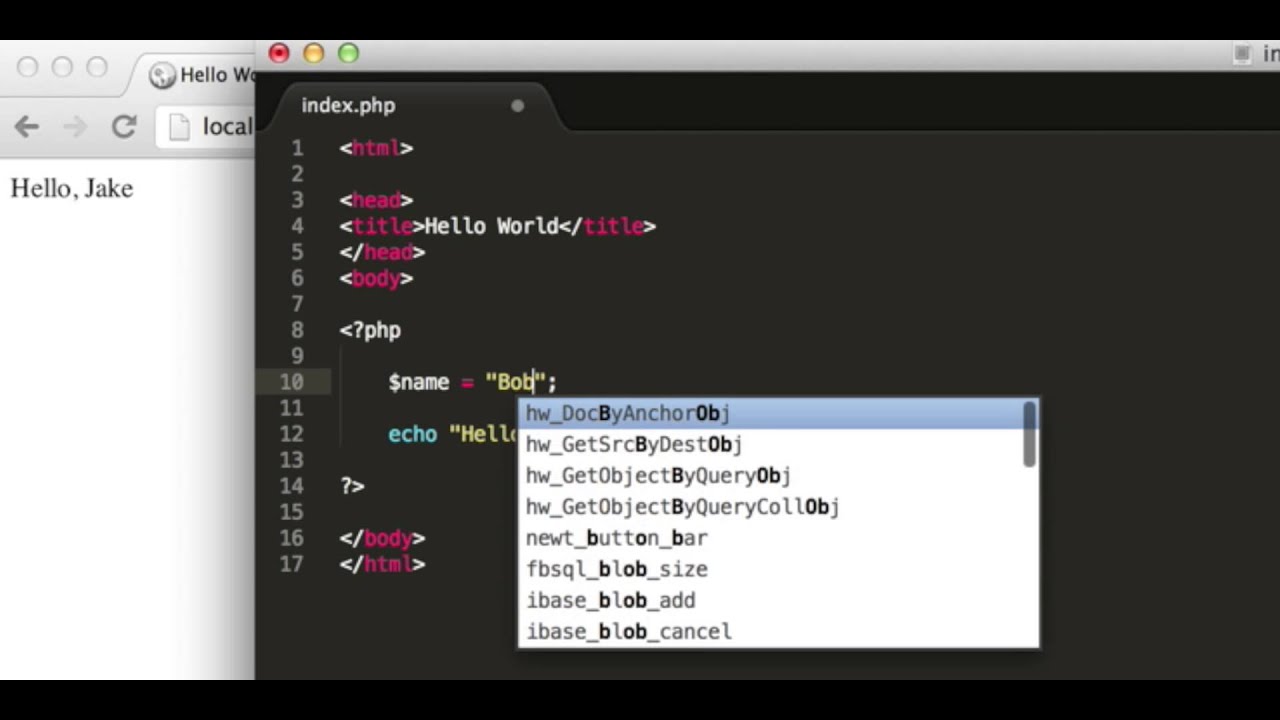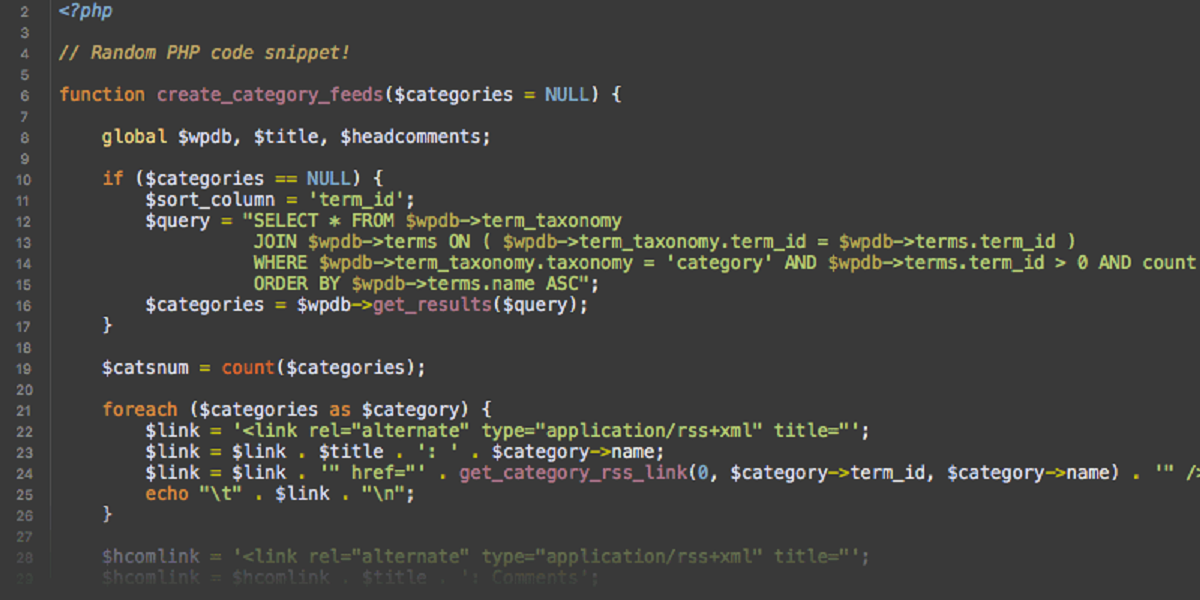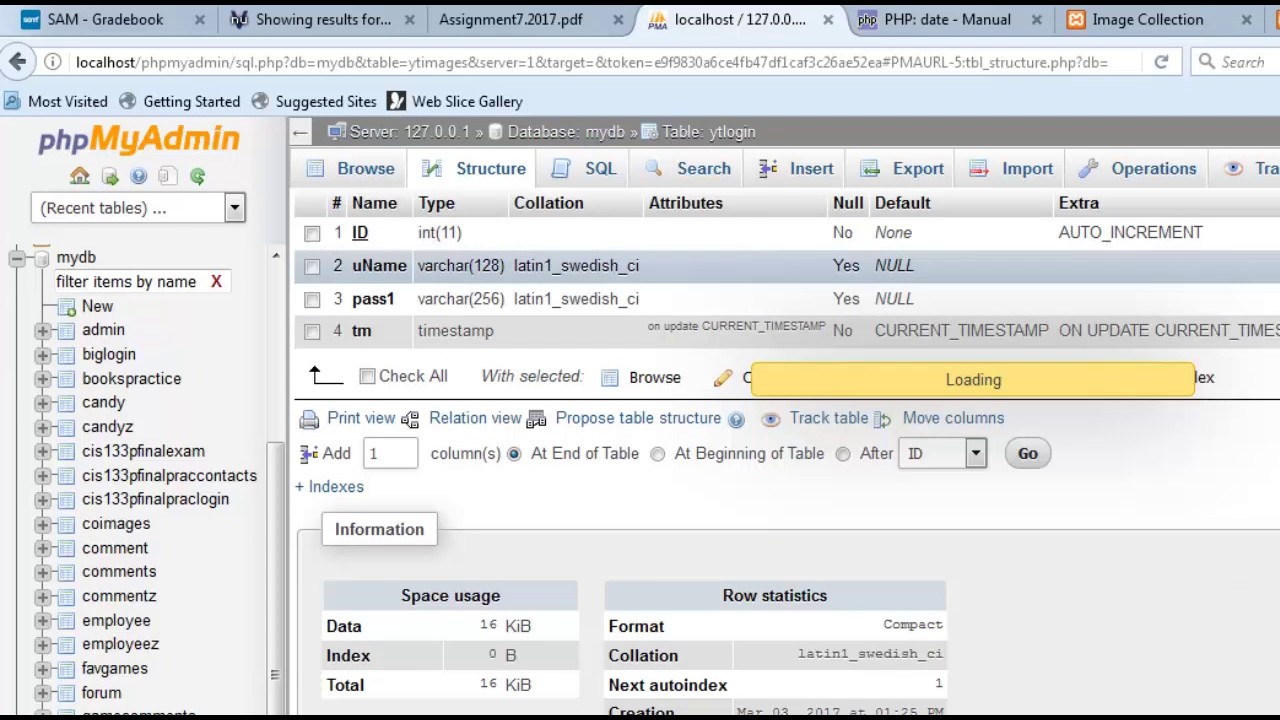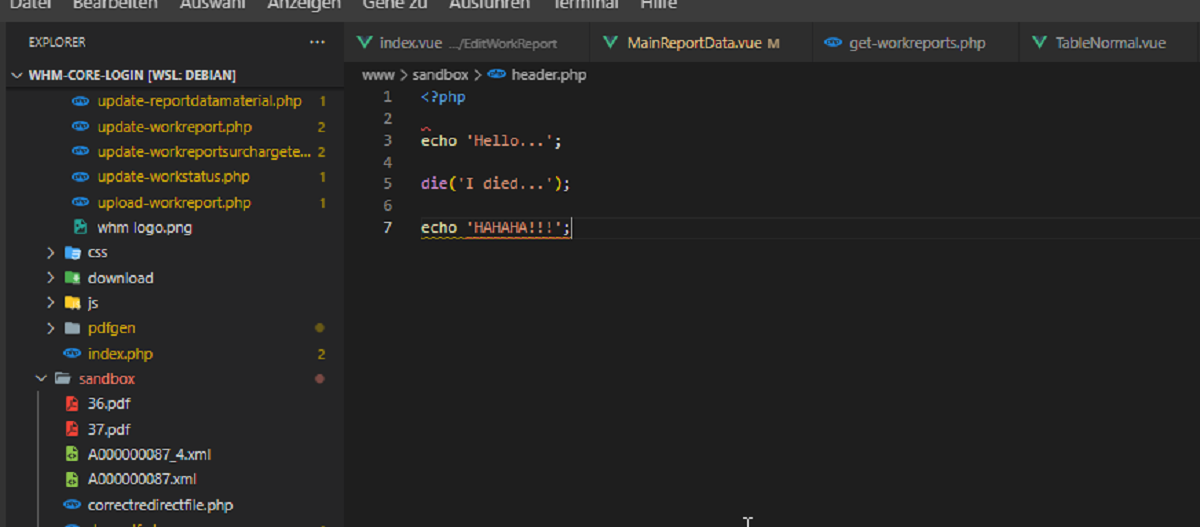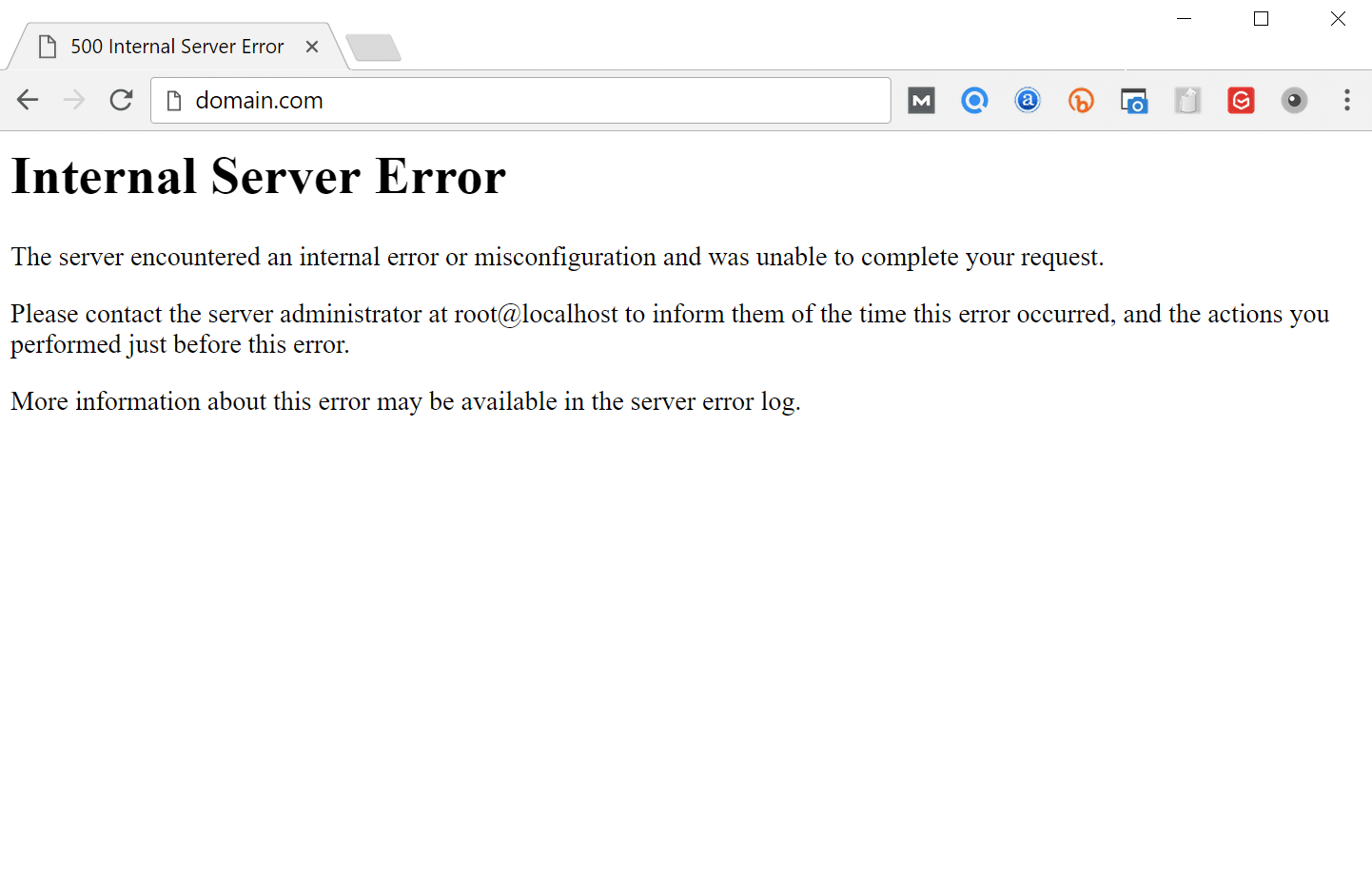Introduction
When working with PHP, it’s common to come across situations where you need to give write permissions to files or directories. Write permissions allow PHP scripts to modify, create, or delete files and directories on your server. However, granting write permissions should be done carefully to ensure the security and integrity of your files and data.
Understanding file and directory permissions is crucial in managing access to your server resources. By properly configuring permissions, you can control who can read, write, or execute files and directories. In this article, we will explore how to grant write permissions in PHP and understand the different methods to set permission modes.
Giving write permissions to files involves changing the permission settings using PHP’s built-in functions or by modifying the file’s permissions directly. Similarly, granting write permissions to directories requires adjusting the permission settings of the directory and its contents. We will discuss the steps involved in both scenarios, along with the difference between numeric and symbolic notation for setting permission modes.
It’s important to note that changing file and directory permissions should be done cautiously, as giving unnecessary or excessive write access can open up security vulnerabilities. Always ensure that you grant write permissions only to trusted users or processes and regularly audit the permissions on your server to minimize the risk of unauthorized access or modification.
In the following sections, we will cover the different approaches to giving write permissions, explore the various permission modes, and provide troubleshooting tips for common issues that you may encounter. By the end of this article, you will have a solid understanding of how to grant PHP write permissions and effectively manage the security of your file system.
Understanding File and Directory Permissions in PHP
Before diving into the process of granting write permissions, it’s essential to have a clear understanding of how file and directory permissions work in PHP. In a Linux-based server environment, each file and directory has a set of permissions that determine who can perform specific actions on them.
File permissions are typically represented by a combination of three sets of permissions: read (r), write (w), and execute (x). These permissions can be granted to three different entities: the owner of the file, a specific group of users, and others (users who are not the owner or part of the specified group). Each entity can be assigned different levels of access.
Directory permissions, on the other hand, function slightly differently. Instead of execute permissions determining whether you can run a directory as a program, it governs whether you can access the contents of the directory. If you don’t have execute permissions on a directory, you won’t be able to list its contents or navigate into it.
The permission modes are represented by a numeric notation (i.e., 0-7) or a symbolic notation (i.e., rwx). The numeric notation assigns a value to each permission (read = 4, write = 2, execute = 1), and the modes are calculated by adding the values together. For example, a permission mode of 644 means the owner has read and write permissions (6), while the group and others have only read permission (4).
The symbolic notation, on the other hand, uses symbolic characters to represent the permission levels. For example, rwxr-xr-x translates to the permission mode 755 (read, write, and execute for the owner, read and execute for the group and others). The symbolic notation provides a more intuitive way of representing permissions, especially for users who are not familiar with the numeric system.
Understanding and managing file and directory permissions is crucial for maintaining the security and integrity of your server. Incorrectly assigned permissions can potentially allow unauthorized access, modification, or deletion of critical files. It’s important to regularly audit and review the permissions on your server to ensure that they are set appropriately and meet the security requirements of your application.
Giving Write Permissions to Files
Granting write permissions to files is a common requirement when working with PHP scripts. This allows your scripts to modify the contents of files, create new files, or delete existing ones. There are two primary methods to grant write permissions to files: using PHP’s built-in functions or modifying the permission settings directly.
1. Using PHP’s built-in functions:
The file permissions can be modified using PHP’s chmod() function. This function allows you to change the mode of a file, which includes the read, write, and execute permissions. The chmod() function takes two arguments: the filename or path of the file, and the new permission mode. The permission mode can be specified either using the numeric notation or the symbolic notation. Here’s an example of granting write permissions to a file using the chmod() function:
2. Modifying permission settings directly:
If you have access to the server’s terminal or a FTP client with file execution capabilities, you can modify the permission settings of a file directly. The most common command used for this purpose is chmod. Here’s an example of granting write permissions to a file using the chmod command:
$ chmod +w path/to/file.txt
When granting write permissions to files, it’s crucial to consider security implications. Giving write access to files that are accessible to the public may pose a security risk. It’s recommended to limit the write permissions only to the necessary files and ensure that they are protected from unauthorized access.
In addition, it’s worth noting that some hosting providers may impose restrictions on modifying file permissions. In such cases, you may need to reach out to your hosting provider’s support team or explore alternative methods to achieve your intended functionality.
By following these guidelines, you can effectively grant write permissions to files in PHP, ensuring that your scripts have the necessary access to modify and manage files as required by your application.
Giving Write Permissions to Directories
Granting write permissions to directories is essential when you need to allow PHP scripts to create new directories, modify existing ones, or delete them. Similar to giving write permissions to files, there are two primary methods to grant write permissions to directories: using PHP’s built-in functions or modifying the permission settings directly.
1. Using PHP’s built-in functions:
PHP provides the mkdir() function to create directories and the chmod() function to modify the permission settings of directories. To grant write permissions to directories using PHP, you can use the mkdir() function with the optional parameter for the desired permission mode. Here’s an example:
2. Modifying permission settings directly:
Similar to granting write permissions to files, you can also modify the permission settings of directories directly using the chmod command. Here’s an example of granting write permissions to a directory using the chmod command:
$ chmod +w path/to/directory
When giving write permissions to directories, it’s essential to consider security implications. Granting write access to directories that are accessible to the public or contain sensitive files can potentially lead to security vulnerabilities. It’s recommended to limit the write permissions to only the necessary directories and ensure that they are adequately protected and not exposed to unauthorized access.
In some cases, you may need to modify the permission settings of a directory and all of its subdirectories and files. This can be achieved by using the -R flag with the chmod command, which stands for recursive modification. For example:
$ chmod -R +w path/to/directory
It’s important to exercise caution when using recursive modification, as it can affect a large number of files and directories at once. Always double-check your commands and ensure that you are modifying only the intended directories and files.
By following these guidelines, you can effectively grant write permissions to directories in PHP, allowing your scripts to manage and modify directories as required by your application.
Setting Permission Modes Using Numeric Notation
Numeric notation is a common method used to represent permission modes in PHP. It assigns a numeric value to each permission level (read, write, and execute) and calculates the permission mode by adding these values together. Understanding how to set permission modes using numeric notation is crucial for managing file and directory permissions effectively.
In numeric notation, each permission level has a corresponding value: read (4), write (2), and execute (1). To calculate the permission mode, you add these values together for the desired access level. For example, if you want to set read and write permissions for the owner, and read-only permissions for the group and others, the permission mode would be 644. Here’s a breakdown of the calculation:
Owner: read (4) + write (2) = 6
Group: read (4)
Others: read (4)
There are two methods to set permission modes using numeric notation: using the octal value or specifying each permission level individually.
1. Using Octal Values:
With this method, you represent the permission mode using a three-digit octal number. Each digit represents the permission level for the owner, group, and others, respectively. Here’s an example:
$permission = 0644;
In this example, the first digit (0) signifies that the permissions are represented in octal format. The following digits represent the permission levels for the owner (6), group (4), and others (4).
2. Specifying Each Permission Level:
Alternatively, you can specify each permission level individually. Here’s an example:
$owner_permissions = 6;
$group_permissions = 4;
$others_permissions = 4;
$permission = $owner_permissions . $group_permissions . $others_permissions;
By specifying each permission level separately, you have more flexibility in setting different access levels for the owner, group, and others. This method allows you to create custom permission modes that suit the specific requirements of your application.
When using numeric notation, it’s important to understand the implications of different permission modes and ensure that you grant appropriate access levels to prevent unauthorized modifications or access to your files and directories. Regularly reviewing and auditing the permission modes on your server is crucial for maintaining the security and integrity of your application’s file system.
Setting Permission Modes Using Symbolic Notation
Symbolic notation is another method commonly used to represent permission modes in PHP. Unlike numeric notation, symbolic notation uses symbolic characters to represent permission levels, making it more intuitive and easier to understand for individuals who are not familiar with the numeric system. Understanding how to set permission modes using symbolic notation is essential for effectively managing file and directory permissions.
In symbolic notation, each permission level is represented by a symbolic character: read (r), write (w), and execute (x). These characters are combined to form a string that represents the permission mode for the owner, group, and others. For example, the permission mode “rw-r–r–” translates to the numeric value 644. Here’s a breakdown of the symbolic representation:
Owner: read (r) + write (w) = rw-
Group: read (r)-
Others: read (r)-
There are two methods to set permission modes using symbolic notation: symbolic characters and the chmod command.
1. Using Symbolic Characters:
With this method, you specify the permission levels for the owner, group, and others using symbolic characters. Here’s an example:
$permission = ‘rw-r–r–‘;
In this example, the first two characters represent the owner’s permissions (read and write), followed by the group’s permissions (read), and finally, the others’ permissions (read).
2. Using the chmod Command:
You can also set permission modes using the chmod command in a terminal or through a FTP client that supports file execution. Here’s an example:
$ chmod u=rw,g=r,o=r path/to/file.txt
In this example, the ‘u’ represents the owner, ‘g’ represents the group, and ‘o’ represents others. ‘=’ specifies that the permissions are being set, and ‘rw’ indicates read and write permissions.
When setting permission modes using symbolic notation, it’s important to ensure that you grant appropriate access levels to the owner, group, and others. Care should be taken to prevent unauthorized modifications or access to your files and directories. Regularly reviewing and auditing the permission modes on your server is essential for maintaining the security of your application’s file system.
Common Issues and Troubleshooting Tips
While setting write permissions in PHP, you may encounter various issues or challenges. Here are some common issues and troubleshooting tips to help you resolve them:
1. Permission Denied Error:
Sometimes, when setting write permissions, you may encounter a “Permission denied” error. This error typically occurs when you are trying to modify permissions on files or directories that you do not have sufficient privileges to access. To resolve this issue, make sure you have the necessary permissions to modify the file or directory, or change the ownership or permissions using a privileged account or ask your system administrator for assistance.
2. Recursive Permission Changes:
When changing permissions recursively on directories and their contents, exercise caution to avoid inadvertently modifying too many files or directories. Double-check your commands and use the appropriate flags, such as the “-R” flag with the chmod command, to ensure the changes are applied recursively only where necessary.
3. Inconsistent Permission Settings:
In some cases, the permission settings of files or directories may not reflect the intended access levels. This can happen due to conflicting permission settings inherited from parent directories. To resolve this issue, carefully review the permission settings of the parent directories and ensure they allow the desired access levels for the files or directories in question.
4. File Ownership Issues:
Incorrect file ownership can sometimes cause permission issues. Ensure that the files or directories are owned by the correct user or group. You can use the chown command to change the ownership if necessary. Additionally, check that the PHP process has appropriate permissions to access and modify the files.
5. Security Considerations:
When granting write permissions, always prioritize security. Avoid giving unnecessary or excessive write access to files or directories accessible to the public. Limit write permissions to only the necessary files or directories and regularly review and audit the permission settings to ensure they align with your security requirements.
6. Hosting Provider Restrictions:
Some hosting providers may impose restrictions on modifying file or directory permissions. If you face limitations or encounter errors when attempting to change permissions, reach out to your hosting provider’s support team for guidance or explore alternative methods to achieve your required functionality.
By considering these troubleshooting tips and being mindful of security implications, you can effectively navigate and resolve common issues related to giving write permissions in PHP. Remember to exercise caution and always test your modifications to ensure the desired functionality without compromising the security of your application.
Conclusion
Granting write permissions to files and directories is a fundamental aspect of managing PHP applications. By understanding the concepts of file and directory permissions in PHP and knowing how to set permission modes using numeric and symbolic notation, you can effectively control access to your server resources.
Throughout this article, we explored the different methods to grant write permissions, including using PHP’s built-in functions and modifying permission settings directly. We discussed the importance of considering security implications and provided troubleshooting tips for common issues that may arise during the process.
When giving write permissions, it’s crucial to strike a balance between providing necessary access to your PHP scripts and maintaining the security and integrity of your files and directories. Regularly reviewing and auditing the permission settings on your server is essential to ensure that they align with your application’s security requirements.
Keep in mind that each hosting environment may have its own specific configurations and restrictions when it comes to managing permissions. It’s important to consult your hosting provider’s documentation or support team for any specific guidelines or limitations that may apply to your situation.
By following best practices and being mindful of security considerations, you can grant write permissions to files and directories in PHP confidently, ensuring that your scripts have the necessary access to manage and modify your application’s data and resources.







